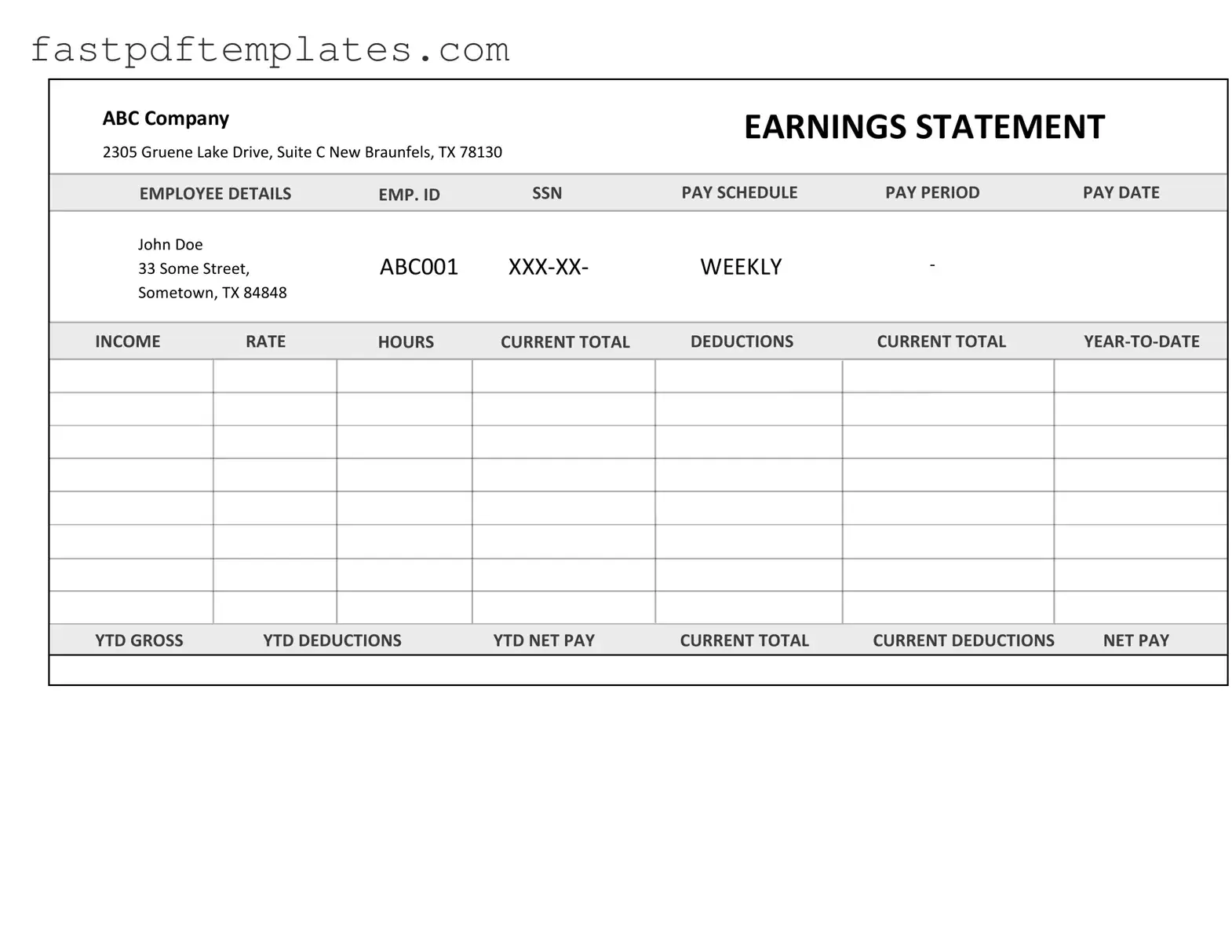The Independent Contractor Pay Stub form serves as a vital record for freelancers and independent workers, detailing the payments they receive for their services. Similar to this pay stub, a W-2 form is issued by employers to employees, summarizing annual wages and tax withholdings. Both documents provide a clear breakdown of earnings, but while the W-2 is used for traditional employees, the Independent Contractor Pay Stub is tailored for those who operate as self-employed individuals. This distinction is crucial for tax purposes, as independent contractors report their income differently than employees.
Another document akin to the Independent Contractor Pay Stub is the 1099-MISC form. This form is specifically used to report payments made to independent contractors who earn $600 or more in a calendar year. Like the pay stub, the 1099-MISC provides essential information about earnings, but it serves a different purpose, focusing on annual reporting rather than a specific pay period. Both documents help independent contractors keep track of their income for tax filing, but the 1099-MISC is submitted to the IRS, while the pay stub is primarily for personal record-keeping.
The Invoice is another document that shares similarities with the Independent Contractor Pay Stub. Freelancers often create invoices to request payment for their services, detailing the work performed and the amount owed. Both documents outline payment information, but invoices are typically generated before payment is received, whereas pay stubs are issued after payment is processed. Invoices can also serve as a request for payment, while pay stubs confirm that payment has already been made.
A Statement of Work (SOW) is also comparable to the Independent Contractor Pay Stub. An SOW outlines the specific tasks, deliverables, and timelines agreed upon between a contractor and a client. While the pay stub focuses on payment details, the SOW emphasizes the scope of work and expectations. Both documents are crucial for establishing a clear understanding of the contractor's role and compensation, ensuring that both parties are on the same page regarding payment and services rendered.
Time Sheets are another relevant document that resembles the Independent Contractor Pay Stub. Time sheets track the hours worked by independent contractors, providing a detailed account of the time spent on various projects. Like pay stubs, time sheets help in calculating compensation, ensuring that contractors are paid accurately for their work. However, time sheets are typically used to record hours before payment is issued, while pay stubs confirm the payment that has already been made based on those recorded hours.
Receipts can also be seen as similar to the Independent Contractor Pay Stub. When independent contractors incur expenses related to their work, they often provide receipts to document these costs. Both receipts and pay stubs serve as proof of financial transactions, but they focus on different aspects. Receipts verify expenses incurred, while pay stubs confirm income received. Both documents are essential for maintaining accurate financial records and can be useful during tax season.
Lastly, an Employment Contract can be compared to the Independent Contractor Pay Stub. While the pay stub provides a record of payment, the employment contract outlines the terms and conditions of the working relationship between the contractor and the client. Both documents are essential for establishing clarity and understanding regarding compensation and responsibilities. The employment contract sets the stage for the work to be done, while the pay stub reflects the financial outcome of that work.
